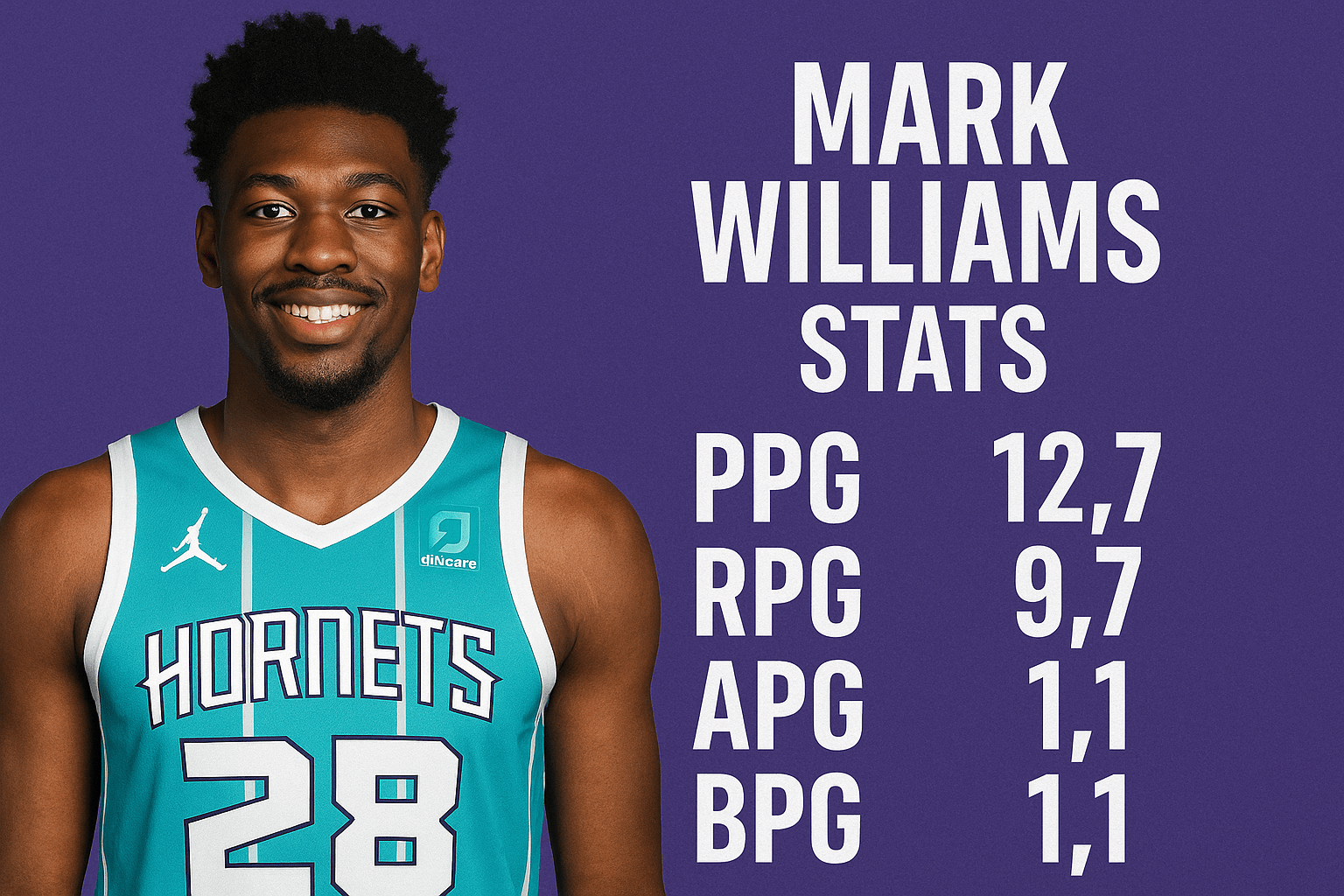Before Mark Williams began catching lobs and anchoring the paint in the NBA, there was a quiet yet steady momentum building behind his name. From the hardwood at Duke to the fast-paced pro stage, his growth hasn’t been loud, but it’s been felt — especially if you’re watching box scores closely. This piece takes you through the nuanced climb of a big man whose stats may say one thing, but whose court presence reveals so much more.
The Early Days: From Potential to Production
Coming into the league, there was chatter — not a roar. Mark Williams wasn’t projected as an immediate superstar, but there was something in his timing, his length, and the way he read defensive rotations that had scouts intrigued. Once the rookie wall hit, as it does for many, he kept his cool. And it began to show.
Stat lines from his first full months in the NBA tell a tale of patience paying off: 9.8 points, 7.5 rebounds, and 1.4 blocks per game across limited minutes. But it’s the efficiency that stood out — shooting well above 60% from the field. That wasn’t just a byproduct of easy shots; it was a reflection of smart positioning and disciplined shot selection.
Midseason Momentum: A Defensive Anchor Awakens
Watch a midseason game and you’d see it instantly — Williams became more than a contributor; he was a problem. Opponents hesitated in the lane, not out of fear but calculation. His blocks weren’t wild or flashy; they were well-timed, vertical contests that ended possessions.
Statistically, February was a turning point. Mark Williams averaged 11.2 points, 8.9 rebounds, and 2.3 blocks per game in just under 26 minutes. The advanced metrics lit up: Defensive Box Plus-Minus (DBPM) rose, and opponents’ field goal percentage at the rim plummeted when he was on the floor.
He wasn’t just padding the stat sheet — he was altering the shape of games.
Offense with Purpose: Not Just a Finisher
Too often, young centers get pegged into roles — rebounder, rim protector, lob target. But Mark Williams refused that ceiling. While he won’t be mistaken for a playmaker just yet, there were glimpses: quick outlet passes, fast break starts, and even a couple assists from the high post.
His stats in March included an uptick in offensive boards and putbacks, but more importantly, his points came in rhythm. He wasn’t forcing his way into the game; the game was coming to him. With guards trusting his hands and timing, pick-and-rolls became smoother, more natural. Williams’ 14-point, 12-rebound outing against a playoff-contending team didn’t just stand out — it told a story of trust being built.
Consistency and Conditioning: The Hidden Stats
Here’s the thing about player stats: they don’t always show the sweat behind the scenes. But when you look at Williams’ steady climb in minutes and performance, you see the fingerprint of discipline.
He stayed on the floor by staying out of foul trouble — a common pitfall for young bigs. His average personal fouls per game hovered just below 2.1, even as his blocks and contests went up. That discipline turned heads.
Moreover, his conditioning allowed him to close quarters strong. His fourth-quarter stats improved month over month, both in rebounding and field goal percentage. That’s not coincidence — that’s preparation.
The Intangibles: Leadership and Locker Room Growth
Though intangible, the stories from teammates matter. Reports began surfacing about Williams stepping into more vocal roles during timeouts. Coaches noted his attention to film. Analysts began pointing out how his presence freed up perimeter defenders to gamble more confidently, knowing he was behind them.
Those aren’t stats you find in a table, but they shape outcomes. And they often predict longevity.
Looking Ahead: What Do Mark Williams Stats Signal for the Future?
If you extrapolate his numbers across a full starting role — say, 30+ minutes — Williams easily projects as a 15-point, 11-rebound, 2.5-block player. But more important than the projections is the trajectory. Every month has shown growth, and every role expansion has been met with readiness.
As his team leans into development and perhaps reshapes its frontcourt strategy, Williams’ steady hand and improving stats give them a foundation. He’s not chasing highlight reels; he’s building a body of work — one stat, one smart rotation at a time.
Conclusion: More Than Just Numbers
Mark Williams stats reveal a promising young center with a unique blend of poise, timing, and steady growth. The numbers will continue to climb, sure. But if you’re only watching his box scores, you’re missing the larger picture. He’s becoming the kind of player whose impact you feel — in the rhythm of the game, in the forced misses, in the silence of a crowd watching yet another shot denied.
Mark Williams isn’t arriving. He’s already here — and if his stat trajectory continues, he won’t be overlooked for long.




